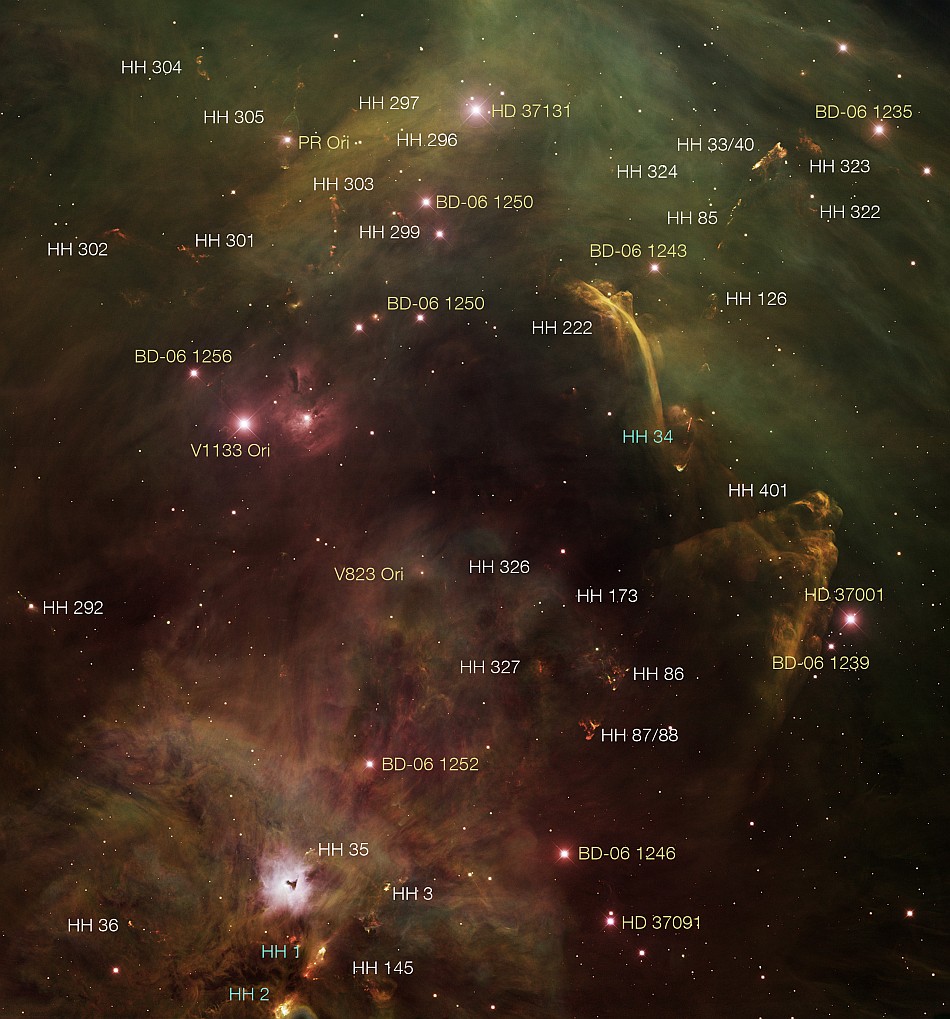 | |
|  |
|
|
| |
| Herbig-Haro objects animated, thanks Hubble | Sep 02, 2011 5:41 AM PDT | url |
| | |
Added 1 new A* page:One of the official Hubble Space Telescope sites, hubblesite.org, which is run by the Space Telescope Science Institute ("STScI") under contract from NASA, just released a bunch of videos that blend together Hubble photos over the years into simulated animations of some of the most studied Herbig-Haro objects; that funny name is a combination of the names of the two guys who studied them in the '40's, and realized that these little star-sized nebulae were actually being emitted from young stars: in the first 100,000 years or so of a star's life, when it is sucking in a bunch of material for fuel, some of that incoming material, often superheated, spins off—possibly along magnetic field lines, like with a black hole—and ends up shooting away from the star in a jet, perpendicular to the accretion disk around the star; so these baby stars can end up shooting two jets of energetic plasma, one from each pole.
The visible reactions mainly come when the material collides with other stuff in the larger nebula in which the baby star was born, and are often seen in bow shapes along the shock front. So these HH objects are very common in active star-forming regions, such as the Orion Nebula, which I covered pretty recently with an assembly of some amazing photos—the last one there, for instance, shows a bunch of HH objects (I called them "bow shocks and eddies and things" at the time, since "Herbig-Haro" is weird and hard to spell :P).
In fact, all but one of the HH objects in the videos above are in the Orion Nebula. Here's a handy map from *another* official Hubble Space Telescope site, spacetelescope.org, run by a European Space Agency ("ESO") group at the headquarters of the European Southern Observatory ("ESO") in Garching, Germany (jeez this is confusing!):

image by Z. Levay (STScI), T.A. Rector (University of Alaska Anchorage), and H. Schweiker (NOAO/AURA/NSF) (source)
That neat photo was captured by the Kitt Peak National Observatory near Tucson, Arizona. The little baby stars there are just 1500 light years away from us.
You might be wondering where HH 47 is, though! According to this hubblesite.org article, it is a 3-trillion-mile-long jet (pretty impressive for one baby star!) along the edge of the faint Gum Nebula (which is named after its 1955 discoverer, Australian astronomer Colin Stanley Gum), about 1300 light years away (a light year is about 10 trillion kilometers, or 6 trillion miles, so that jet is half a light year long!).
NASA has a bit more about the movies in their article here, in particular mentioning the curious clumpy nature of the jets, which suggests the accretion and shooting off of material is not a steady process. Note though that this same animating thing has been done before with these HH objects, for instance in the Flash montages here—although those only go to 2007 rather than 2008, and don't really try to simulate the movement of the plasma between photos in great detail.
~~~~~~~~
On a semi-related note, I added a "hubblevid" tag to the forum for embedding hubblesite.org videos; their embed format isn't the easiest to work with though, and I suspect it will probably break if the site ever upgrades to a larger video size. :"P
|
·····
|
|
|
